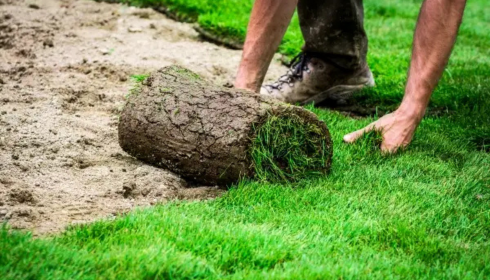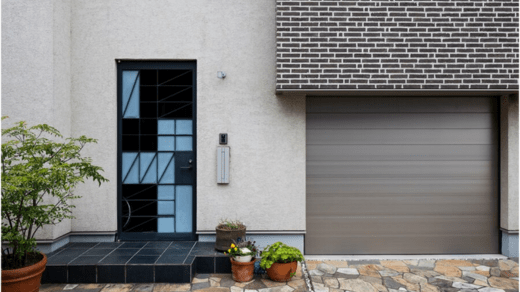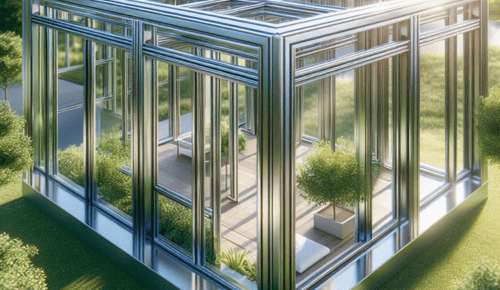After major drainage work, lawns rarely bounce back on their own in the way homeowners expect. Trenches, grading changes, and soil movement alter the ground’s structure, leaving bare strips, loose zones, and uneven surfaces. That’s why landscaping services near me commonly pair drainage fixes with either sodding or seeding to restore stability and protect the yard long-term.
Restoring Soil Stability After Trench and Drainage Work
Installing French drains, catch basins, or channel systems means excavating soil and resetting it back into place. Even with proper compaction, disturbed soil settles unevenly for months. Sodding or seeding acts as a structural aid, forming a web of roots that binds that ground tighter than compacted dirt ever could on its own.
Fresh grass roots also work as natural bracing. Without them, the backfilled areas remain loose and shift with footsteps, rainfall, and temperature swings. For many lawn care companies near me, establishing grass immediately after a drainage project is less about aesthetics and more about reinforcing the soil’s new layout safely.
Preventing Washout on Newly Graded Lawn Areas
Drainage corrections often reshape slopes so water moves in a new direction. Until the new grading hardens and stabilizes, runoff can easily carve lines through exposed soil. Seeding or sod acts like a shield, trapping water at the surface and slowing its movement before it digs into loose ground.
Rain doesn’t need a storm-level force to damage unprotected soil—consistent light runoff can shift enough sediment to undo hours of grading work. For homeowners in Huntsville AL, where seasonal rain patterns can shift quickly, new grass coverage becomes a practical layer of erosion insurance.
Closing Gaps That Invite Weeds After Pipe or Channel Installs
Exposed soil is a magnet for invasive plants, especially after drainage installations that open long strips of dirt across a yard. Weeds colonize these gaps quickly because they thrive in loose, nutrient-imbalanced ground. Sodding provides an instant barrier while seeding creates long-term competition that weeds struggle to overcome.
Weed growth can eventually clog shallow surface drains, clog grate inlets, and interfere with proper water flow. Landscaping companies near me treat grass installation as a preventive measure to block opportunistic growth before it turns into a recurring maintenance headache.
Rebuilding Turf Density That Drainage Work Temporarily Disrupts
Even when installers protect surrounding grass during construction, heavy machinery and soil shifting compress roots and thin out turf density. The visible yard may look mostly intact, but underground stress often shows weeks later as faded or patchy spots. Sodding or overseeding restores that density before thinning becomes permanent.
What sets successful restoration apart is timing. Addressing turf loss right after drainage work gives grass the entire growing window to mature before dormancy or summer stress arrives. A landscape company that prioritizes turf density avoids the domino effect of thinning that often leads to long-term lawn weakness.
Protecting Soil Nutrients While the Ground Resets
Soil that has been dug up and repositioned temporarily loses microbial balance, organic content, and nutrient structure. New grass helps rebuild this faster by encouraging biological activity underground. Grass roots feed soil organisms, while organic decay from regular mowing cycles gradually rebuilds topsoil nutrients.
In this phase, the grass acts like a recovery system. Without it, exposed soil dries out faster, loses nutrients through runoff, and becomes harder to condition later. Early sodding or seeding gives the soil a head start on restoring its natural balance.
Improving Water Absorption with a Refreshed Grass Layer
Drainage systems are designed to move excess water away, but healthy lawns should still absorb what they need at the surface. Fresh grass improves infiltration by softening the soil structure and opening tiny channels that allow water to penetrate evenly instead of pooling. Root networks also interrupt sheet runoff, giving light rainfall time to absorb rather than rush toward drains too fast. Landscaping services near me install grass after drainage work to reintroduce a balanced water cycle—removing what’s excessive while keeping what the lawn actually needs.
Rebalancing Yard Grading with Root-supported Ground Cover
Grading work adjusts yard elevation, but roots are what hold those new contours in place. Without vegetation, graded soil eventually relaxes, subtly flattening out and undoing precise slope calculations. Grass roots lock elevation lines and help the yard hold engineered shapes designed to move water predictably.
This is where grass becomes a structural partner to the drainage layout. Unlike decorative plants or mulch, turf creates a connected system of anchors that stabilize entire sections of yard simultaneously, especially in wide open lawn spaces.
Reducing Mud Tracking and Erosion During Seasonal Rain Swings
Bare soil and seasonal rain are an unstable mix. Foot traffic turns soft ground into slippery mud, and repeated storms scrape away inches of unprotected earth. This tracks into driveways, patios, garages, and indoor floors while gradually lowering yard elevation along runoff paths.
Fresh sod eliminates mud instantly, while seed establishes protective coverage quickly when paired with erosion blankets or soil amendments. Many properties in Huntsville AL experience alternating dry and wet swings, making fast soil coverage essential, not optional.
Restoring a yard after drainage work is more than replacing what was dug up—it’s rebuilding a system that now behaves differently than it did before. The right approach blends erosion control, turf recovery, soil health, and long-term surface stability. For projects requiring grading, drainage, and full landscape recovery support, Cora Landscape specializes in unifying those steps into one seamless outcome.





